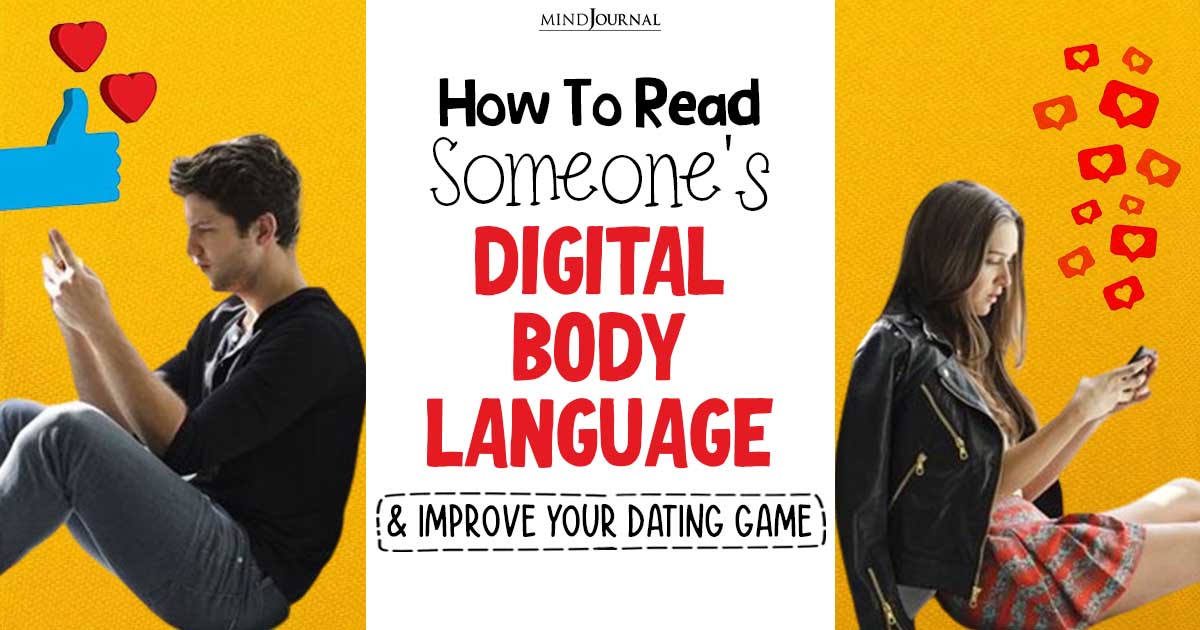Gone are the days when catching someone’s eye across the room, or brushing someone’s arm, were the main ways of communicating interest and feelings. Now dating is online, and digital body language (DBL) is becoming important when it comes to connecting with potential partners.
In this article, we will explain the importance and how to read digital body language. Are you ready to get into the world of online dating and relationships? Let’s go!
What is digital body language?
All physical behaviors which express thoughts, intentions, and feelings are called body language. This includes facial expressions, gestures, eye movement, touch, even body posture.
Similarly the term “digital body language” refers to how we communicate through our screens. It could be texting or going on dating platforms and using emojis, punctuation marks, message length and response time as it involves reading between the lines and inferring what people really mean.
Related: Why Do People Use “LOL” After Every Text That Is Not Particularly Funny?

A Gen Z Dating Report statistic shows that the context of your messages can greatly influence how someone perceives them.
6 Digital Body Language Examples
Digital body language refers to different components through which we communicate our emotions and intentions. Here are some digital body language examples that you should consider:
1. Sending Emojis
These cute little icons add emotion and tone to text messages. A simple smiley face “smiley” emoji can soften a message and make it seem friendly or approachable, while a “heart” might indicate love or romantic interest. On the other hand, no emojis could mean formality or distance.
2. Punctuation
The way we use punctuation in our messages can also change their meanings. For example, exclamation marks (!) can show excitement or enthusiasm, whereas ellipses (…) may imply hesitation or trailing thoughts. Too much punctuation might come across as too intense or emotional.
3. Length of Message
How much you write can tell someone how interested you are. Long, detailed messages reflect investment in the conversation and desire to know more about the other person; while short replies usually indicate disinterest or lack of time.
4. Response Time
When considering response times as part of digital body language interpretation, think about what they could say about the person’s level of attention towards you.
For instance, promptness showing eagerness while delay suggests being busy with other things (or less interested). Nevertheless always instantaneously replying might be seen as over eagerness if not desperation.
5. Typing Indicators
Seeing those three dots can cause anticipation before reading a message. A long pause after seeing them followed by an actual message means that somebody took their time thinking about what to type next. But when one types quickly and sends answers back immediately after receiving texts it shows spontaneity coupled with excitement.
How To Read Digital Body Language?
These signs should give you an idea on how they feel about certain aspects or topics discussed during conversations. Here are some tips for reading digital body language:
1. Always take into consideration where and when conversations happen.
For example if someone sends a short message during work hours it might mean that they are busy at that moment rather than disinterested in talking to you. Knowing the person’s daily schedule will help determine what constitutes normal response time frames for them.
2. Look out for patterns and consistency!
Note how often certain things like emojis or exclamation marks are used in their texts all along until now this may give an indication of whether things have changed emotionally or not.
Do not forget to keep things real, and healthy to succeed with online dating! Till then, share your thoughts in the comments below!
3. Notice who does most of the talking
When two people are involved in a conversation, does one person seem more interested than the other? This could indicate lack of interest from one side if so then there’s need to move on.
Unless both people don’t mind having such an arrangement which is also okay but either way it means there isn’t mutual attraction going on here.
4. Sometimes silence speaks louder than words can ever do.
When dealing with your feelings, pay attention whenever someone avoids certain topics or gives vague answers because this might signify discomfort about sharing personal information with others.
Related: Leg Crossing Personality Test: The Way You Cross Your Leg Reveals The ‘Unseen’ You
Just as traditional body language does, DBL is about understanding what someone isn’t saying out loud. Tell us what you think in the comments if this article helped you!
Disclaimer: This article is for informational purposes only and is not intended as a substitute for professional mental health advice, diagnosis, or treatment. While we strive for accuracy, we do not guarantee the completeness or reliability of the information provided. Readers should always seek guidance from a qualified mental health professional for any concerns regarding their mental well-being.










Leave a Reply